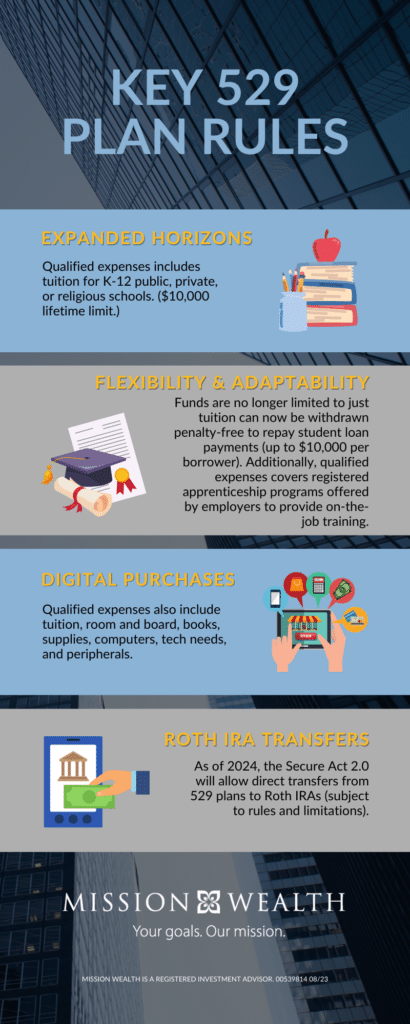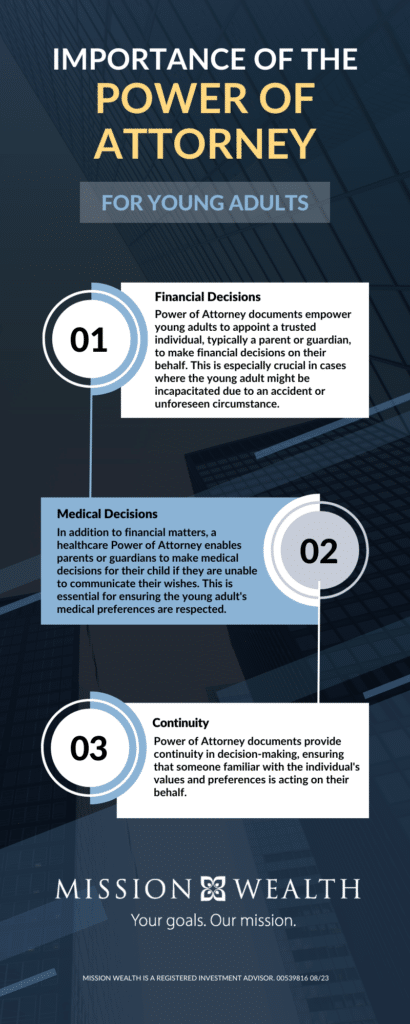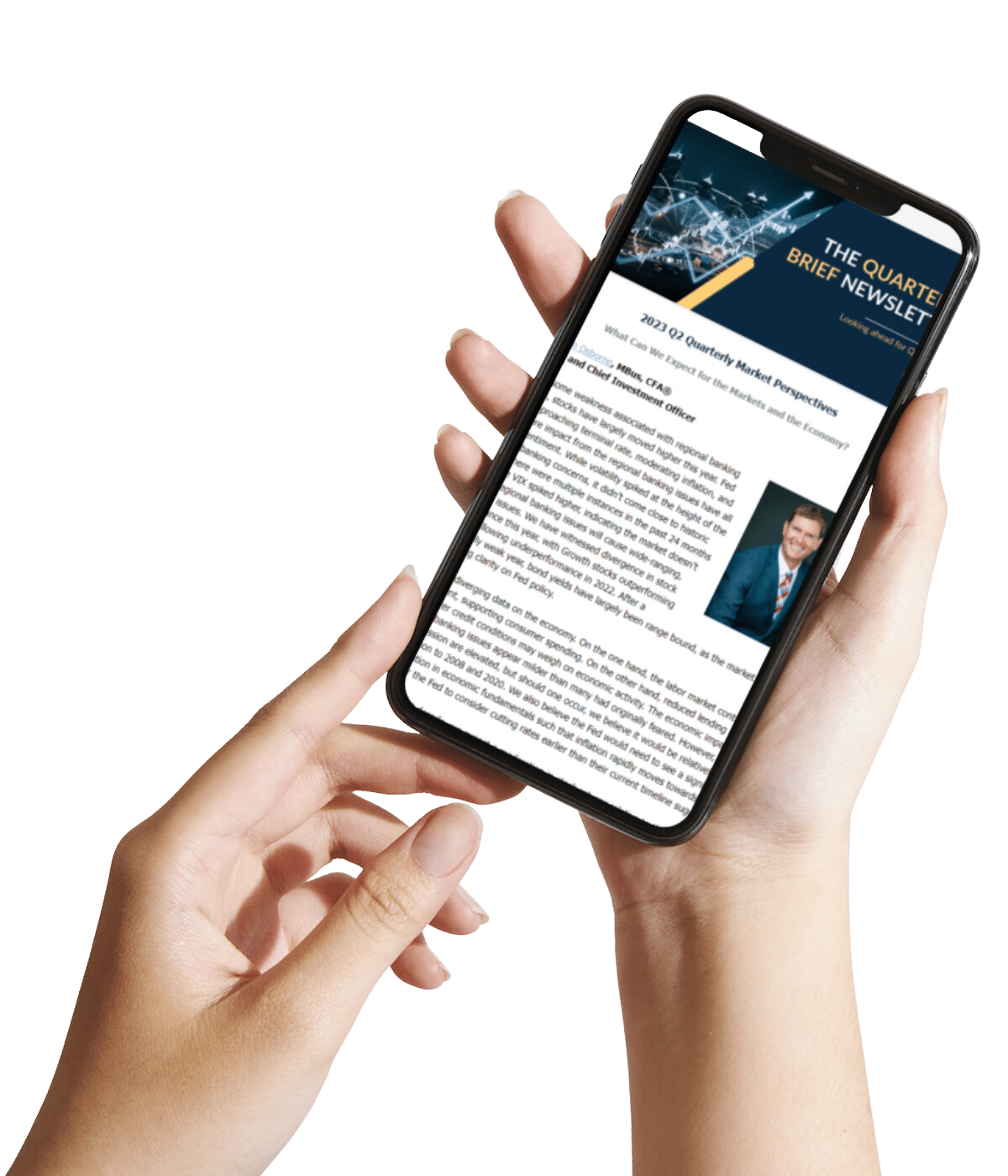
It’s that time of year again – the weather’s still warm but summer days are beginning to drift away. As another school year is upon us, it’s important to remember that financial planning isn’t just about planning for ourselves – it’s about making sure that we’re taking care of our kids too. Whether your kids or grandkids are just starting preschool or you’re loading the station wagon (or Amazon and Target carts) to take them off to college, it’s important to remember some of the tools out there to help set them up for success. As a nationally recognized wealth management firm, staying updated with the latest financial regulations and strategies is essential to offer the best advice to our clients.
Recent changes in 529 plan rules and the significance of power of attorney documents for young adults have brought new dimensions to financial planning. In this article, we will delve into the key updates in 529 plans and discuss the importance of creating power of attorney documents for young individuals who have just turned 18.
529 Plan Updates after Secure Act 2.0 That Get an A+
A 529 plan is a tax-advantaged savings plan designed to help families save for education expenses. Traditionally, these plans were primarily associated with college education, but recent updates have broadened their scope. Just like how you experience different subjects and your knowledge base expands as you progress through school, 529 plans have advanced forward as well. Here’s how some of the rules compare to some of the courses you’d find in school today.

- Expanded Horizons – Reading: Under the old rules, funds from a 529 plan could only be used for higher education costs. But just like how learning to read allows you to expand your horizons, so too have the rules around 529 plans. The Secure Act 2.0 expanded the definition of qualified education expenses to include K-12 costs.
- Flexibility and Adaptability – Science: Just as we learn in science class about how organisms grow and adapt to their environments, so too have 529 plans. Funds no longer are limited to just tuition – up to $10,000 can now be withdrawn penalty-free to repay student loan payments. Additionally, higher education has been expanded to include apprenticeships and certification courses, a recognition that there are different paths to achieving education goals. This expansion provides families with greater flexibility when managing education-related expenses, allowing them to address a wider range of educational needs.
- Digital Purchases – Computer Science: Technology is an integral part of education these days. The Secure Act 2.0 authorizes the use of 529 funds for technology purchases, such as computers and internet access. This update ensures that your student is equipped with the tools they need in the ever-expanding digital landscape.
- Transfers – Math: One of the most powerful new features to 529 plans helps solve what happens when you have unused 529 funds. Unused funds can be directly transferred from a 529 to a Roth IRA beginning in 2024. However, there are several rules that need to be followed:
-
- Rollovers won’t be allowed; it must be a direct transfer.
- The Roth IRA must be in the name of the beneficiary of the 529 plan.
- The 529 plan must have been maintained for at least 15 years.
- The maximum lifetime transfer is $35,000 and is subject to annual IRA contributions limits. (In other words, you won’t be able to transfer the whole amount over in one year.)
Key Advantages of 529 Plans
- Tax Benefits: Contributions to a 529 plan grow tax-free, and withdrawals for qualified education expenses are also tax-free. This remains a significant advantage for families seeking to minimize tax liabilities while saving for education.
- Flexibility: With the inclusion of K-12 expenses and student loan repayments, families have the flexibility to adapt their plans to suit their changing circumstances and educational needs.
- Generational Planning: Families can use 529 plans as a tool for generational wealth planning. Grandparents and parents can contribute to the same account, ensuring a seamless transfer of assets and providing for the educational needs of multiple generations.
Turning the Tassel: The Need for Power of Attorney Documents
When a child turns 18, they legally become adults, and parents or guardians no longer have automatic access to their financial, medical, and legal matters. Just as they symbolically turn the tassel on their cap at graduation, turning 18 represents their transition into adulthood and being in charge of their own affairs. This transition can present challenges, especially when it comes to managing financial affairs. This is where Power of Attorney documents come into play.
 Importance of the Power of Attorney (POA) for Young Adults
Importance of the Power of Attorney (POA) for Young Adults
- Financial Decision-Making: Power of Attorney documents empower young adults to appoint a trusted individual, typically a parent or guardian, to make financial decisions on their behalf. This is especially crucial in cases where the young adult might be incapacitated due to an accident or unforeseen circumstance.
- Medical Decisions: In addition to financial matters, a healthcare power of attorney enables parents or guardians to make medical decisions for their child if they are unable to communicate their wishes. This is essential for ensuring the young adult’s medical preferences are respected.
- Continuity: Power of attorney documents provide continuity in decision-making, ensuring that someone familiar with the individual’s values and preferences is acting on their behalf.
- Access to Information: When your child leaves for school, their school information is also protected. However, many schools allow for parents to access their children’s information so long as the child has signed a Family Education Rights and Privacy Act (FERPA) waiver.
Maximizing Financial Security
Incorporating the new 529 plan rules into your wealth management strategies can significantly benefit young graduates, offering them enhanced options for funding education-related expenses. Simultaneously, emphasizing the importance of creating power of attorney documents for young adults turning 18 showcases your commitment to helping them become successful and educated community members.
Mission Wealth can assist by addressing both the future educational needs and the legal and financial challenges that come with adulthood, and you can provide comprehensive support to your loved ones in navigating their own financial journey. Part of Mission Wealth’s Estate Planning services includes estate plan document drafting. This software is perfect for simple file creations such as power of attorney documents. Contact us today to get started with your family’s holistic financial and estate plan.
Additional Articles You May Find Interesting:
Estate Planning for Your High School Graduate
A Parent-Student Contract: Monitoring Your Kids in College
Important Financial Lessons for Your High School and College Age Kids
Financial Guidance For Your Life Journey
Talk with a financial planner about your next steps.Guidance For Your Full Financial Journey
Through our comprehensive platform and expertise, Mission Wealth can guide you through all of life's events, including retirement, investment planning, family planning, and more. You will face many financial decisions. Let us guide you through your options and create a plan.
Mission Wealth’s vision is to provide caring advice that empowers families to achieve their life dreams. Our founders were pioneers in the industry when they embraced the client-first principles of objective advice, comprehensive financial planning, coordination with other professional advisors, and proactive service. We are fiduciaries, and our holistic planning process provides clarity and confidence. For more information on Mission Wealth, please visit missionwealth.com.
To schedule a meeting with a Mission Wealth financial advisor, contact us today at (805) 882-2360.
Mission Wealth is a Registered Investment Advisor. This commentary reflects the personal opinions, viewpoints, and analyses of the Mission Wealth employees providing such comments. It should not be regarded as a description of advisory services provided by Mission Wealth or performance returns of any Mission Wealth client. The views reflected in the commentary are subject to change at any time without notice. Nothing in this commentary constitutes investment advice, performance data, or any recommendation that any particular security, portfolio of securities, transaction, or investment strategy is suitable for any specific person. Any mention of a particular security and related performance data is not a recommendation to buy or sell that security. Mission Wealth manages its clients’ accounts using a variety of investment techniques and strategies, which are not necessarily discussed in the commentary. Investments in securities involve the risk of loss. Past performance is no guarantee of future results.
Let's Keep in Touch!
Subscribe for exclusive content and timely tips to empower you on your financial journey. Our communications go straight into your inbox, so you'll never miss out on expert advice that can positively impact your life.Recent Insights Articles

Market Update 12/10/25: Fed Cuts Rates for Third Time – Implications for Markets and the Economy
December 10, 2025
Five Behavioral Biases That Shape How We Care for Aging Parents
December 10, 2025


